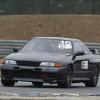2f2f Skyline R34
Announcements
-
Similar Content
-
Latest Posts
-
I just post it cuz it clearly shows my problem...way better than i would take to explain that. Yeah i think/hope he make it little bit better. And that RB is good. I got it from running car(even test drive it) so it is not some engine from unknown car from half across planet 🙂
-
By Dose Pipe Sutututu · Posted
That's an idea, like an exhaust flap. But yeah nah, spent too much money on this shit box. -
What did he print it from? Need to be aware if the fuel will react / break it down.
-
Do it. Or add a PCB and feed that part to it...







Recommended Posts
Create an account or sign in to comment
You need to be a member in order to leave a comment
Create an account
Sign up for a new account in our community. It's easy!
Register a new accountSign in
Already have an account? Sign in here.
Sign In Now